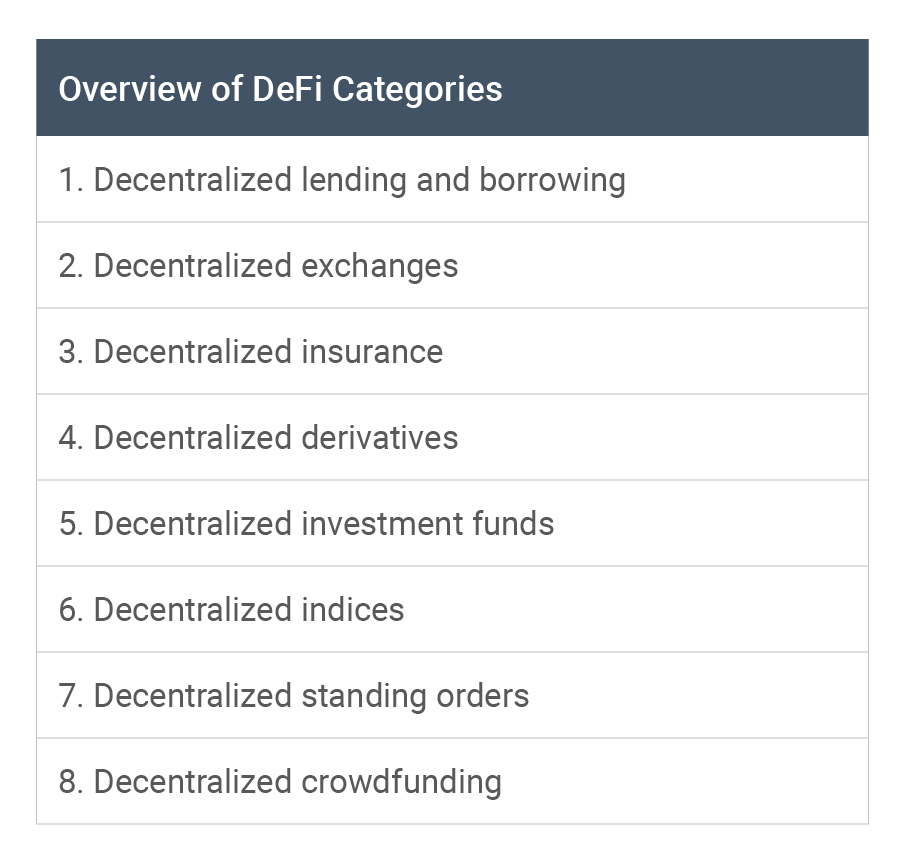
Dr. Niklas J.R.M. Schmidt, TEP CBP, is a partner at the Austrian law firm Wolf Theiss. He has been involved in the crypto space since 2013 — as a researcher, an investor, and a lawyer.
Decentralized finance (DeFi) refers to the provision of traditional financial services without the involvement of centralized players such as banks and insurance companies. Instead, DeFi uses smart contracts: computer programs running on decentralized blockchains. Unlike human actors, who might occasionally make errors, smart contracts will always work the way they have been programmed to do.
While this might sound strange to those who are not well-versed in crypto, the potential for disruption in this area is significant. A few years ago, The Economist stated that DeFi has the potential to completely rewire how the financial system works. I absolutely agree and hope to persuade you, too.
Compared to traditional financial services, DeFi offers multiple advantages. Firstly, access to DeFi is in general given on a pseudonymous basis, without a user having to comply with onerous Anti-Money Laundering (AML) requirements and without having to fill out paper forms. Secondly, access is possible daily, around the clock, and from anywhere in the world. Thirdly, there is no requirement to trust an intermediary, which means that a user does not have to trust a bank, its employees, or its regulators. Neither is there a requirement to obtain the consent of a third party for carrying out a transaction. Finally, with DeFi, financial services can be automated more than ever before, giving rise to additional efficiencies.

There are several categories of DeFi, which are listed in Table 1. I will focus on the first three categories below.
Table 1

Banks accept deposits from investors and pay interest on them. They lend this capital to borrowers and receive higher interest rates on the loans. Platforms for decentralized lending and borrowing operate in the same way, but with smart contracts rather than intermediaries, and with crypto assets instead of fiat money. There are many examples, the most well-known ones being AAVE and Compound.
On such decentralized marketplaces for capital, lenders can lend crypto assets (by sending them to the smart contract) and borrowers can borrow crypto assets (from the smart contract). Lenders receive interest and borrowers pay interest. The applicable interest rates are determined algorithmically by supply and demand, and constantly change. There is no need (or possibility) to negotiate terms. Loan agreements are not made between individual users. Instead, lenders lend to the smart contract and borrowers borrow from the smart contract. This is known as peer-to-protocol lending, rather than peer-to-peer lending. There are no fixed maturities, so deposits can be withdrawn, and liabilities repaid, at any time. When borrowing crypto assets, collateral exceeding the loan amount must be provided in advance. This is due to the pseudonymity of the blockchain and the resulting lack of a credit score for the borrower. The required collateralization ratio can for example be 150%.
There are various possible applications for decentralized lending and borrowing. Long-term crypto investors (so-called hodlers) can — without any counterparty risk — earn additional interest on their crypto assets. In addition, investors with bank deposits that yield no interest, or only very low interest, can switch to stablecoins (that is, crypto assets linked to a fiat currency such as US dollars), deposit them with a DeFi app, and earn significantly higher interest rates. Investors may also engage in interest arbitrage by borrowing a stablecoin at a low interest rate on one platform and lending this stablecoin at a high interest rate on another platform. Alternatively, investors who want to short a crypto asset can borrow it on one of these platforms, exchange it for a stablecoin, and pay it back after the price has (hopefully) dropped. It is also possible that investors who hold a crypto asset that they believe will rise in value can use that asset as collateral to borrow further amounts to achieve leverage. Note that, in certain jurisdictions, investors can avoid selling a crypto asset (and thus realizing a taxable gain) by using it as collateral and borrowing stablecoins against it. As prices increase, additional amounts can be borrowed each year without repayment.
A crypto exchange (for example Binance, Coinbase, or Kraken) has a central operator that holds the crypto assets of its users (thus, this is a type of custodial exchange). This means that users must trust the operator to ensure that they will be able to withdraw their funds from the exchange in full and at any time.
With a decentralized exchange (DEX), there is no central operator holding the crypto assets in question (thus, this is a type of non-custodial exchange). Instead, smart contracts are used, eliminating counterparty risk. The best-known examples of DEXs are Curve, SushiSwap, and Uniswap. Technically, there are two different systems; in practice, the most important DEXs have an algorithmic so-called Automated Market Maker (AMM) under the hood. There are also a few DEXs with a traditional order book, which can be on-chain (this means that the DEX is fully decentralized) or off-chain (this means that the DEX is only semi-decentralized).
DEXs and traditional crypto exchanges differ in several key aspects. As already mentioned above, in the case of a DEX, there is no entity that holds the crypto assets of a user, whereas a traditional exchange holds them itself. Anyone can list a new trading pair on a DEX, while on a traditional exchange a listing depends on a decision by the exchange operator (which will often require a fee to be paid). In addition, the trading fees accrue to all the liquidity providers on a DEX (meaning those operators making crypto assets available on the DEX for traders to trade against) and not to the exchange operator alone as they do on a traditional exchange. Finally, in comparison with what is typical of a traditional exchange, a DEX will mostly have no application of KYC/AML provisions, no geo-blocking of certain customers, and no official customer support.
Previously, crypto assets were primarily listed on traditional exchanges before gradually being listed on DEXs. However, the current trend is for projects to list their crypto assets on a DEX first, which is a simpler and more cost-effective process. If the project is successful, traditional exchanges will eventually follow suit.
Decentralized insurance involves two parties: insurance providers, who send risk capital to the smart contract, and policyholders, who send the insurance premium to the smart contract.
In the event of an insured incident, normally as determined through a vote by the community of insurance providers, the smart contract will release funds from the risk capital to pay the agreed insurance benefit to the policyholders. If no incident occurs, the insurance providers will receive their risk capital back. In either case, the insurance providers will receive the insurance premium as compensation for undertaking the risk.
A key example of decentralized insurance is Nexus Mutual. Founded by a former board member of Munich Re in the UK, it offers dozens of types of insurance — including protection against risks associated with bugs in a DeFi protocol, centralized exchanges, and custodial wallets.
DeFi has existed for only a few years, but as these examples demonstrate, this innovative technology has the potential to completely transform the world of finance.